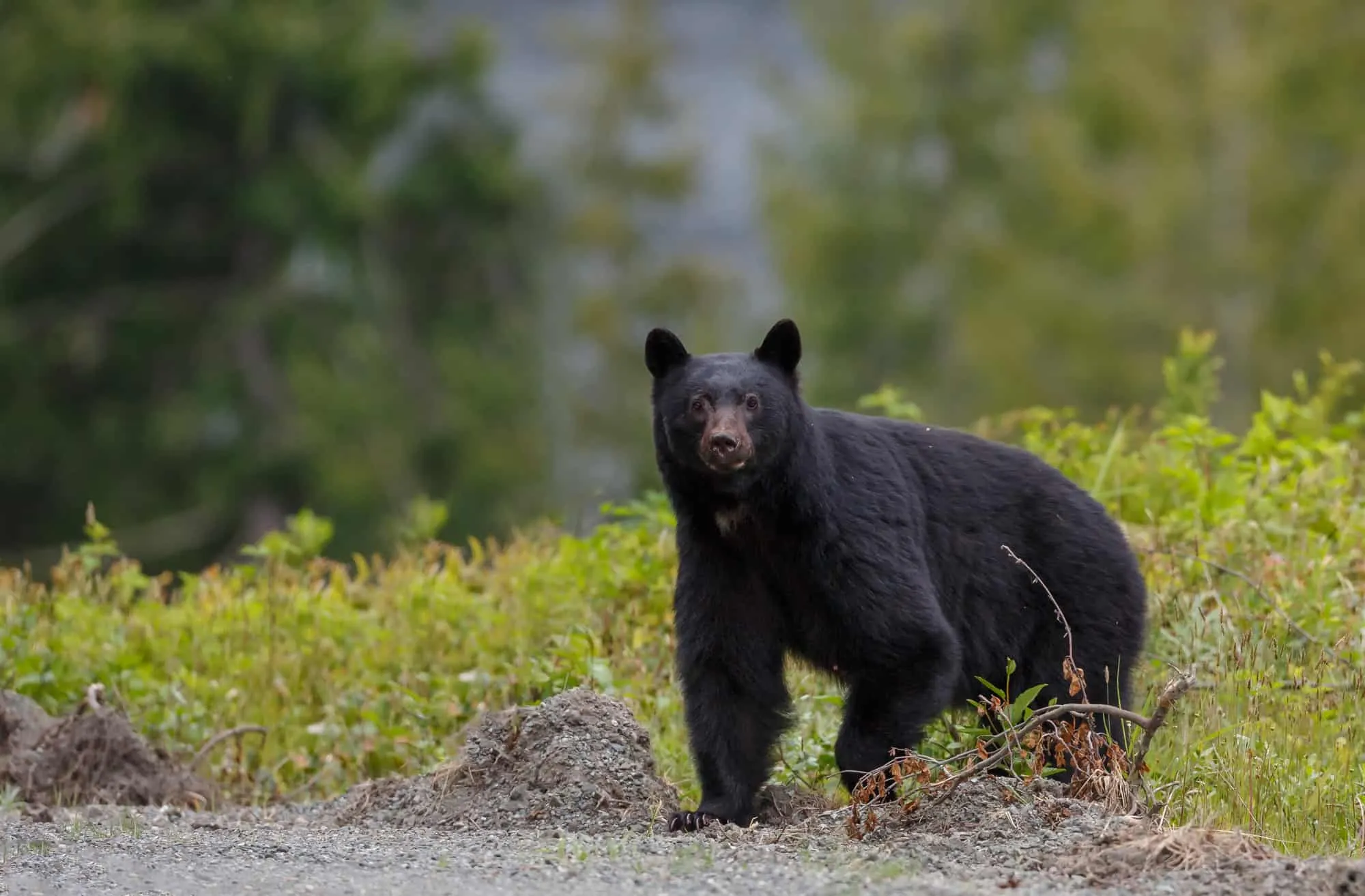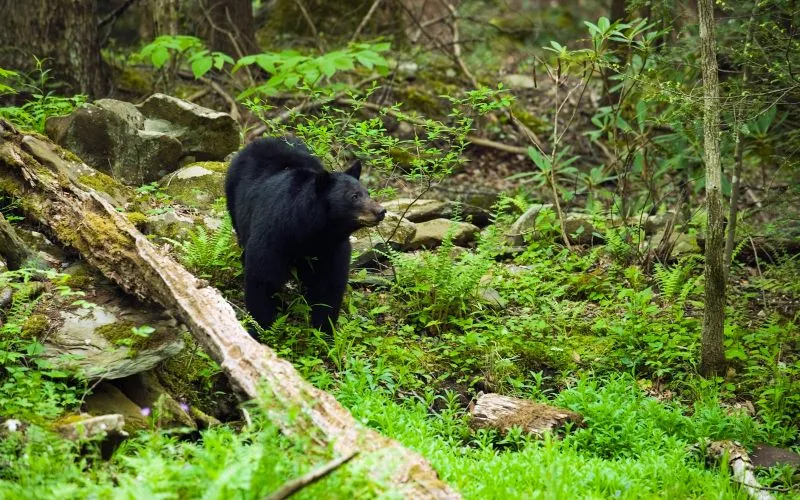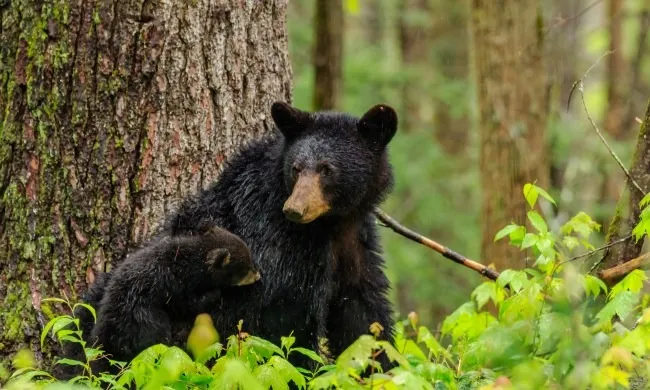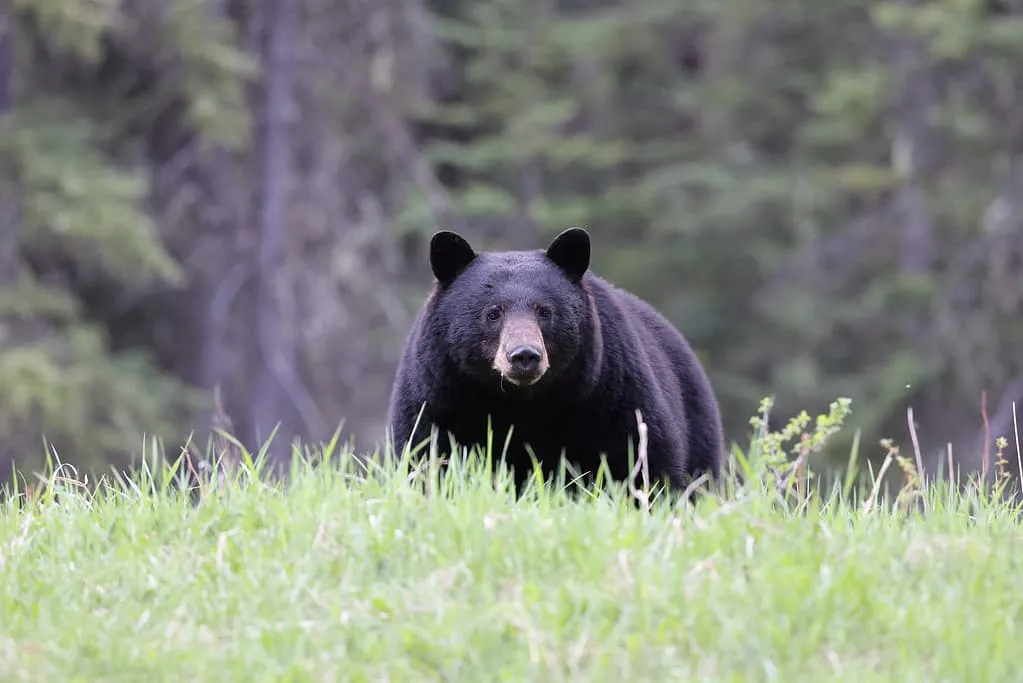Hey there, fellow adventurers!
Buckle up, because I’m about to take you on a wild ride through one of the most enchanting corners of the United States – Acadia National Park! If you’ve ever dreamed of spotting a bear in its natural habitat, then you’re in for a treat. Picture this: towering pines, rugged coastlines, and the occasional glimpse of majestic Acadia National Park bears rummaging through the underbrush. It’s like something straight out of a storybook, but it’s all real, and I’ve got the stories to prove it!
So, grab your hiking boots, pack your sense of wonder, and let’s dive into the heart of Acadia. Whether you’re a seasoned nature lover or just looking for a new adventure, this park has something magical in store for you. And who knows? Maybe you’ll be the next one to spot a bear and come back with a tale as thrilling as mine. Ready to explore with nationalparkshops.com? Let’s go! ??
Overview of Bear Species in Acadia National Park
Acadia National Park, located on Maine’s stunning Mount Desert Island, is home to various wildlife, including the elusive black bear (Ursus americanus). While these bears are not frequently seen, they play a crucial role in the park’s ecosystem. Acadia National Park bears are typically medium-sized, with adults weighing between 150 to 600 pounds. Their fur ranges from black to dark brown, and they possess a keen sense of smell, which they use to locate food sources.
The black bear population in Acadia is estimated to be around 30 to 50 individuals, primarily residing in the park’s dense forests and remote areas. These bears are omnivorous, feeding on a diet that includes berries, nuts, insects, and small mammals. Understanding the behavior and habits of these bears is essential for visitors hoping to encounter them in their natural habitat.
Acadia National Park bears are generally solitary creatures, except during mating season or when a mother is raising her cubs. Cubs typically stay with their mother for about 1.5 years, learning essential survival skills before venturing out on their own. The presence of black bears adds to the park’s biodiversity and offers a unique opportunity for wildlife enthusiasts to observe these magnificent animals in the wild. So if you go to Acadia National Park, one of the things to do there is to see Black Bears.

What is bear habitat like in Acadia National Park?
As far as I know based on official information sites, a mix of dense forests, wetlands, and mountainous terrain characterizes the habitat of black bears in Acadia National Park. These environments provide the bears with ample food sources and cover for shelter. The park’s varied ecosystems include deciduous and coniferous forests, which are rich in vegetation that bears rely on for foraging.
Acadia National Park bears prefer areas with abundant berry bushes, acorns, and other natural food sources, making the park’s understory vegetation crucial for their survival. In spring, bears emerge from hibernation and seek out tender green plants, roots, and emerging berries. As summer progresses, they shift their diet to include more fruits, such as blueberries and blackberries, which are plentiful in Acadia.
During Acadia in the fall, black bears are often seen foraging for acorns in oak forests, as they prepare for winter hibernation. They typically seek out areas with minimal human disturbance, which allows them to forage safely. The park’s remote locations, such as the Schoodic Peninsula and the backcountry trails, are ideal for bear sightings, as these areas provide the necessary habitat for their natural behaviors.

What is the best time to view Acadia National Park bears?
If you’re itching to catch a glimpse of those furry Acadia National Park bears, let me spill the beans on the best times to do so. Picture this: the golden hues of Acadia sunrise or the soft twilight of dusk, when the park’s black bears are in their element, rummaging through the wild for a hearty meal. Yep, these guys are crepuscular creatures, which means they’re most lively at those magical times when day meets night. It’s like they’re nature’s own night owls and early birds rolled into one!
Now, if you’re thinking of timing your visit, spring and early summer are your golden tickets. Those fluffy bears are fresh out of hibernation, hungry as a bear (pun intended), and on the prowl for some scrumptious berries and lush greens. It’s like they’re saying, “Hibernation? More like a long nap, and now it’s feast time!”
But wait, there’s more! As autumn rolls in, these Acadia National Park bears kick it into high gear, stocking up on calories like it’s Black Friday. They’re all about that acorn life and any other goodies they can get their paws on, prepping for their winter snooze. So, if you’re up for some serious bear-watching action, fall is your jam.
Now, let’s not kid ourselves; spotting a bear isn’t a walk in the park (literally) year-round. Those chilly winter months? They’re snoozing away, dreaming of their next big meal. So, if you’re keen on a bear encounter, aim for late spring to early fall. Trust me, it’s worth the wait to see these magnificent creatures in their natural habitat.
Read More: Best Time to visit Acadia National Park
Tips for viewing Acadia National Park bears
So, you’re gearing up for a bear-spotting adventure in Acadia National Park? Awesome choice! But hold your horses – before you dive headfirst into the wild, let’s chat about some bear-friendly dos and don’ts. Trust me, these tips are like the secret sauce to a successful safari without the safari jeep.
First off, stealth mode is your bestie. Acadia National Park Bears? They’re the introverts of the animal kingdom. A little noise and they’re outta there faster than you can say “s’mores.” So, zip it, be zen, and let patience be your guide. You’ll be the ninja of nature in no time!
Next up, binoculars are your new BFFs. They’re like the VIP passes to the bear show, letting you watch the action from a comfy, safe distance. No need to gatecrash the party; just sit back and enjoy the view.
Now, let’s talk bear IQ. Knowing your bears means knowing their hangouts. Keep an eye out for those telltale signs – flipped rocks, tree scratches, and, um, bear doo-doo. It’s like a treasure map, but for bears!
Location, location, location! Stick to the hotspots like the trails around Jordan Pond or the eastern deciduous forests. And remember, the early bird catches the bear. Or the late bird. Basically, dawn and dusk are your prime times.
Safety in numbers, folks! Bears are like, “Nah, not today” when they see a crowd. So, round up your crew, and hit the trails together. It’s more fun, and way safer.
And finally, respect is key. If a bear decides to grace you with its presence, keep your cool, give it space, and definitely don’t try to play chef with your picnic basket. Remember, a fed bear is a dead bear—for real. Keep it wild, keep it safe.

FAQs about Acadia National Park bears
Do you need bear spray in Acadia National Park?
In the land of Acadia, bear encounters are about as common as a unicorn sighting – pretty rare. But, here’s the thing: if you’re venturing off the beaten path or striking out solo, a can of bear spray might just be your new best friend. Think of it as your personal bodyguard in a can. It’s not about being paranoid, it’s about being prepared. If the thought of a potential bear encounter gives you the heebie-jeebies, then toss that spray in your daypack. It’s like insurance—you hope you never need it, but you’re glad to have it just in case.
What wildlife is there in Acadia National Park?
Acadia National Park isn’t just about bears—it’s a haven for a wide variety of wildlife! During your visit, you might spot white-tailed deer, and if you’re lucky, even a moose (though sightings are rare). Keep an eye out for foxes, raccoons, and a stunning array of bird species, including peregrine falcons and melodious songbirds.
The park’s rich ecosystems support an incredible range of mammals, reptiles, amphibians, and marine life, making it a fantastic destination for wildlife enthusiasts. There’s so much to discover and appreciate in Acadia.
What are the best trails in Acadia for spotting bears?
If you’re on the lookout for the best hikes in Acadia to spot bears, I’ve got some fantastic recommendations for you!
First up, the Jordan Pond Loop is a must-visit. This scenic trail offers plenty of opportunities to see Acadia National Park bears foraging in the surrounding woods. It’s a great way to combine beautiful views with wildlife spotting!
Next, don’t miss the Carriage Roads. These historic roads provide access to a variety of habitats where bears may be spotted, especially during dawn and dusk. They’re perfect for a leisurely stroll with the chance of some exciting wildlife encounters.
Lastly, the Schoodic Peninsula Trails are another gem. The less-trafficked areas of the Schoodic Peninsula are known for their wildlife sightings, including bears. If you’re looking for a more secluded adventure, this is the place to be!
So, grab your hiking shoes and get ready for some unforgettable bear-spotting experiences on these amazing trails!
Are there any guided tours focused on bear watching in Acadia?
There do not appear to be any guided tours in Acadia National Park that are solely focused on bear watching. However, several options may provide opportunities to spot bears while exploring the park:
- Ranger-led tours and educational programs: The National Park Service offers a variety of ranger-led tours and programs that provide insights into Acadia’s ecosystems and wildlife. While not specifically bear-focused, these tours may offer the chance to see bears, especially during the early morning and late afternoon hours when they are most active.
- Private wildlife tours and cruises: Several private companies in Bar Harbor offer wildlife tours and cruises, such as whale watching and lobstering tours. While the primary focus may be on marine life, these tours often visit areas where bears have been spotted, such as the Schoodic Peninsula.
- Self-guided exploration: Visitors can increase their chances of seeing bears by exploring the park’s wooded trails, particularly around Jordan Pond and in the eastern deciduous forests. Early morning and late afternoon are the best times for bear sightings.
Conclusion
As my adventure in Acadia National Park comes to a close, I can’t help but feel a sense of awe and appreciation for the incredible bears that call this place home. From the thrill of spotting a bear foraging in the woods to the peacefulness of observing them from a safe distance, every moment has been unforgettable.
I hope this guide has inspired you to explore Acadia and experience the magic of its wildlife for yourself. Remember, respecting the Acadia National Park bears and their habitat is key to ensuring these amazing creatures continue to thrive.
Thank you for joining me on this wild journey, and happy bear spotting!??
If you’re planning a trip to Acadia National Park, I have a few articles available that I think you’ll find helpful: Places To Stay Near Acadia National Park, Boston To Acadia National Park, NYC To Acadia National Park, Restaurants in Acadia National Park, Hotels Near Acadia National Park,…

